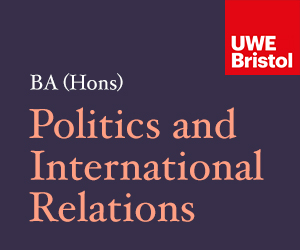New Terror or Old News?
The application of sudden non-state actor violence to achieve political goals can be traced far back in history, but terrorism as a transnational and organized activity was first witnessed in Europe by the end of the 19th century. A long-term process of change usually precedes terrorism. Thus terrorism does not occur in stable times or systems, and its effectiveness is dependent on the instability of the framework or society it is practiced in.
What role does religion play in Hamas’ political behaviour?
This essay argues that religion plays a crucial role in Hamas’ political behaviour. Hamas established its identity around Islam when the organisation was being created and today it places Islam in the centre of its political actions. Yet Hamas remains a political organisation at a relatively high level of development, and it uses selected religious elements depending on what it deems profitable in any given political situation.
Cultural awareness and counterinsurgency in Afghanistan
The current campaign in Afghanistan has lasted for over nine years and the Taliban has grown into a formidable insurgency. This paper explains why a lack of cultural awareness condemns counterinsurgency operations to almost certain defeat, and explores the implications for the campaign in Afghanistan.
Islamic Fundamentalism in Central Asia: Evaluating Uzbekistan’s Response
Ever since the dissolution of the Soviet Union, Islam has undergone a revival among Central Asian societies. The hitherto communist and atheist states with arbitrarily imposed constraints on the freedom of worship, started referring to their religious roots as a step in national identity formation.
To what extent is the ‘battle of Sadr City’ a case of Urbicide?
Viewed within the conceptual framework of Urbicide, which posits that cities have become the expressed target of military operations, the battle of Sadr City reveals the inherent objectives of counter-insurgency (COIN) theory — the annihilation of place.
What are the consquences of the notion of “Islamist terrorism”?
The use of othering discourse and increasing threat levels encourages fear and mass hysteria in Western countries. Preconditioned as we are by Religiophobia, ethnophobia and Islamophobia, the exaggerated threat of Islamic terrorism specifically and religious terrorism generally cannot be negated until dominant stereotypes and representations are subjected to change.
The challenges confronting western intelligence services after 9/11
After the attacks there was an automatic shift in intelligence interest from state to non-state actors. Agencies changed from gatherers into hunters, searching for any information revealing possible threat of attack. Compared to standard state targets, Al- Qaeda and other global terrorist groups were more difficult to find, target and spy on due to their mobility.
Al-Qaeda and the success of US intelligence
The year 1989 will remain in a global history as direct beginning of Soviet Union’s collapse which was finalized in the 1991. This year will also stay in world remembrance as a founding date of probably best known terrorist organization – Al-Qaeda. How well has US intelligence performed against this threat?
Hamas in Power
Hamas, ‘Harakat al-Muqawama al-Islamiyya’ (The Islamic Resistance Movement), has evolved over time from its humble beginnings as a faction of the Muslim Brotherhood, to an arguably legitimate political body, controlling much of the occupied Palestinian territories. This paper will reflect on the key factors in its development and features of the movement, and will conclude with a discussion of Hamas’ future as both an agent of armed struggle and a legitimate political body.
Did the End of the Cold War or 9/11 Have a Greater Impact on European Security?
The end of the cold war, the terrorist attacks in New York, Washington and later in Moscow, Beslan, Madrid and London, the nuclear threats from Iran and North-Korea, the situation in the Balkans and Near East and the recent wars in Iraq and Afghanistan all have demonstrated the practical implications of conceptual changes in European security.



